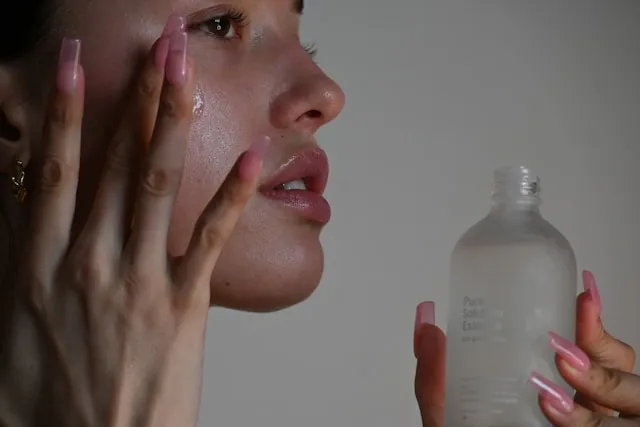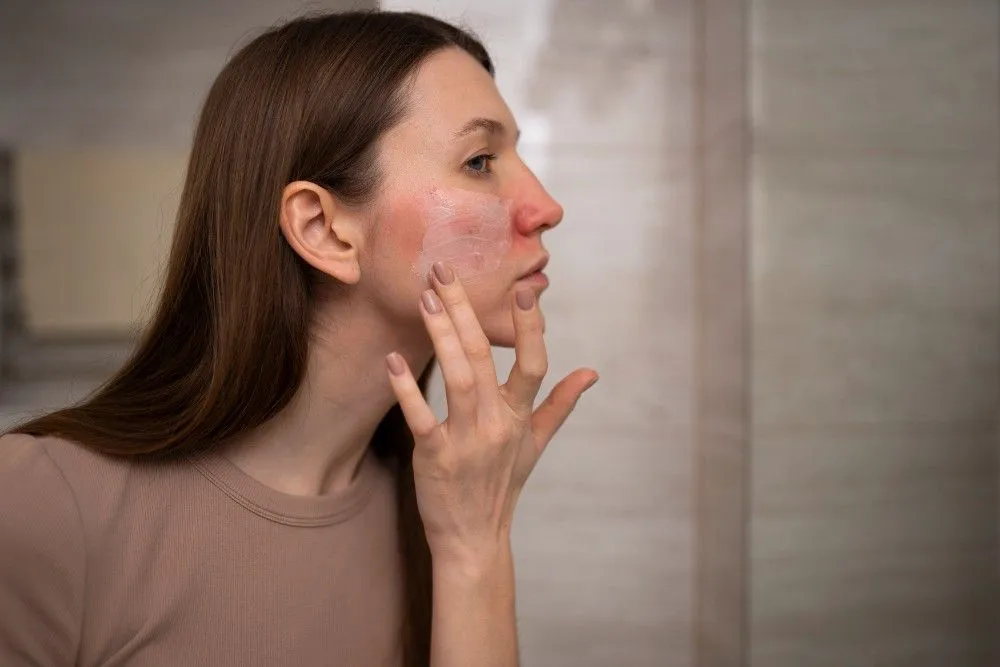Nowadays, a lot of people blindly opt for a hair transplant as a solution for their alopecia problems without knowing the reason behind their hair fall. alopecia is a complex issue and can be caused due to a number of factors, internal as well as external. No, your alopecia is not just genetic, it's rather based on what you eat, your hormones, your metabolism, digestion, lack of sleep, and levels of stress. Other environmental factors such as harmful UV rays, dirt, dust, pollution, water, also play a significant role in alopecia. At Traya Health, we believe that alopecia is also a lifestyle concern and we address these internal and external reasons to arrest further alopecia with an efficacy rate of 93%.Take the hair test to find the root cause behind your alopecia symptoms! In this artricle. We are going to discuss what are the alopecia areata symptoms.
What Are The Alopecia Areata Symptoms?
It's normal to lose 50 - 100 strands a day but anything exceeding this limit is a matter of concern. The initial step is to first detect this alopecia and then understand why it is happening.
1. Hair thinning
Hair thinning is a frequent symptom seen by many. Before one's hair fall starts, thinning of hair occurs. If this is not taken care of at the right time, it can lead to a problem called receding hairline.
2. Male pattern baldness symptoms
In men, a receding hairline starts from their temples. Your hair will stop growing at either of the temples making an M-shape on your forehead. This is the most common symptom seen in most men. For some, the entire hairline can go back making the forehead larger than before.
3. Wider partition in females
In contrast to men, women don't experience a receding hairline. Female pattern alopecia appears as hair thinning, followed by their partition getting wider. However, if you are someone who often ties their hair into a bun or a ponytail then it is possible that your hairline is receding, because of a condition known as traction alopecia.
4. Circular or patchy bald spots
The appearance of bald spots is also a symptom of alopecia. At such spots, the hair volume is very less and the scalp is very easily visible.
5. Scalp patches with blisters
These scalp patches with blisters can occur because of fungal infection on the scalp. These blisters contain pus which damages the scalp as well as hair follicles.
Also Read: Tablets for alopecia
Reasons Behind Alopecia Symptoms
There are multiple reasons for hair fall and finding the cause is the first step toward coming out with solutions. Alopecia or alopecia symptoms might be the result of an underlying disease or poor diet, but could be simply a result of a genetic predisposition and the process of aging. Daily lifestyle stressors, fad diets, weight loss, menopause and pregnancy could be some of the factors responsible for alopecia. Traya Health can help you identify the root cause behind what's causing your alopecia through an online hair test. Here are some of the main reasons for hair fall:
1. Hereditary alopecia
More commonly referred to as genetic alopecia, this condition is majorly transferred from parents to children through their genes. This is often the most common cause of alopecia. Hereditary-pattern baldness also known as androgenic alopecia is not really a disease, but rather a natural condition caused by a combination of genetics, hormone imbalance, and the aging process. In men, it is referred to as male pattern alopecia while in women it is called female pattern alopecia. Thinning of hair is mostly seen as the first sign of this type of alopecia, followed by scalp visibility or a receding hairline.
2. Hormonal Imbalance
Hair fall also occurs because of an imbalance in various hormones. Female hormones promote the growth of hair, while male hormones make sure that you have a shorter hair cycle. Hormonal imbalance conditions like PCOS, hyper or hypothyroidism, pregnancy, childbirth or even menopause can cause alopecia. Imbalances can be corrected with the help of a proper diet, natural supplements, and a few topical applications.
3. Emotional Distress
Stress & anxiety can be one of the reasons for hair fall. Worrying about an impending divorce or having a financial crisis or going through depression can make you emotionally distraught. This is sure to take a toll on your hair and health too. A rejuvenating scalp massage with warm herbal scalp oil might work wonders in alleviating stress. You may also consider Traya Health's ayurvedic treatment for hair fall to minimize side effects. A healthy and nutritious diet is of course an essential requirement, the lack of which could prove to be one of the prime reasons for hair fall.
4. Lack of Nutrition
Maintain proper health by following a balanced diet. You need to consume adequate amounts of all nutrients. You are likely to shed hair regularly if you follow a poor diet lacking proteins, iron, and vitamins. Conditions like iron deficiency anemia or various vitamin deficiencies can cause hair thinning and eventually alopecia. A healthy and nutritious diet is bound to provide the impeus for the hair follicles to grow in a proper fashion.
5. Low energy levels
alopecia accompanied by a lack of energy levels indicates poor metabolism levels which means the body is unable to absorb essential nutrients and convert them into energy. This can also trigger hair fall. Fixing your digestion, metabolism and absorption can ensure that your body properly absorbs nutrition from your body and important gut functions such as producing essential enzymes and hormones for overall health and hair.
Takeaway
The bottom line is that if you are experiencing alopecia areata symptoms, the first thing would be not to panic but rather to identify the reason behind this alopecia which can be done with the help of Traya Health's online hair test. After identifying these reasons, you will get a doctor-prescribed treatment plan based on the type and stage of alopecia and also taking into consideration any underlying health conditions. The treatment will also recommend a diet chart and a hair coach who will help you stay on track with the treatment.

Reviewed by







